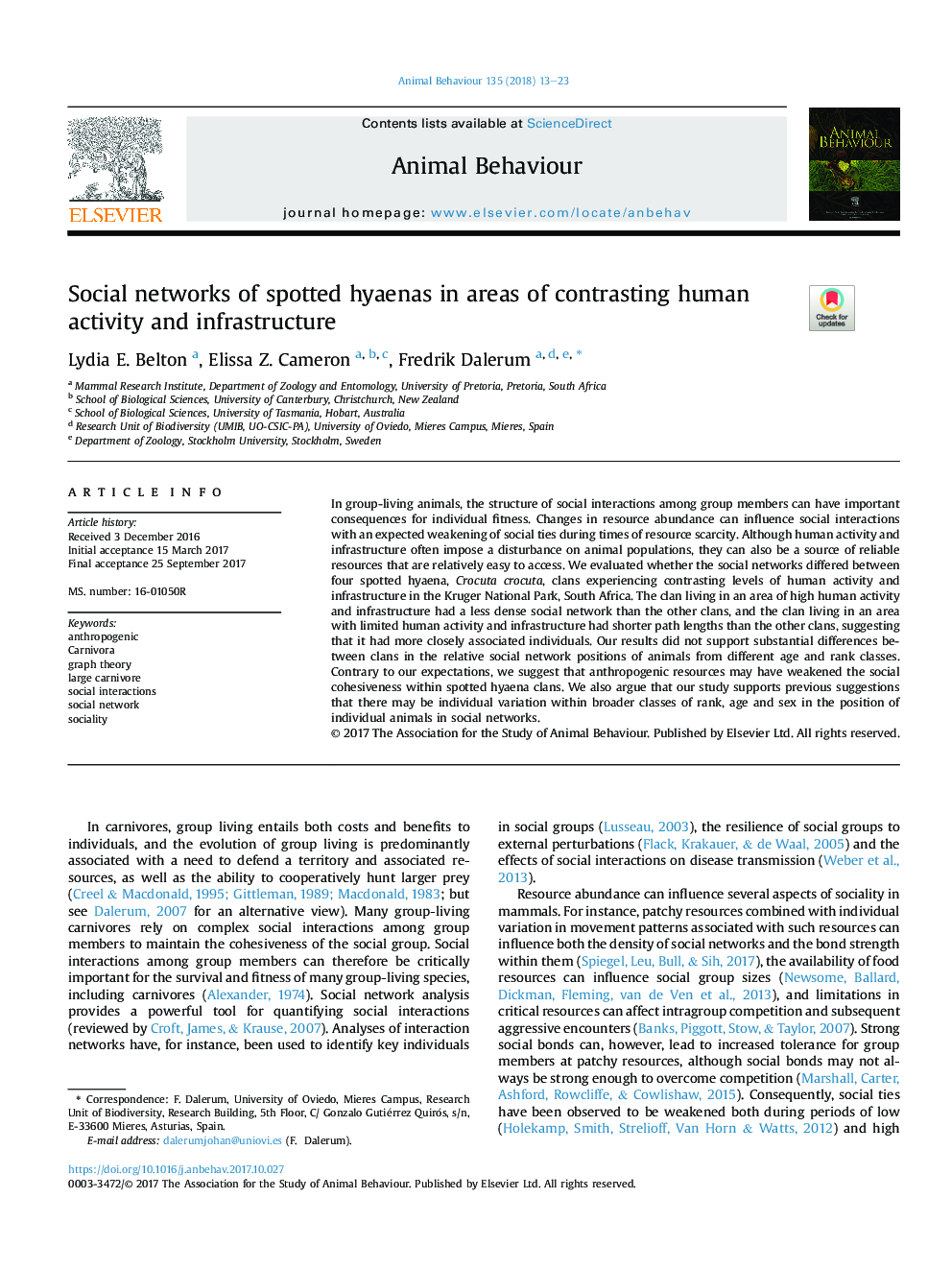| Article ID | Journal | Published Year | Pages | File Type |
|---|---|---|---|---|
| 8488713 | Animal Behaviour | 2018 | 11 Pages |
Abstract
In group-living animals, the structure of social interactions among group members can have important consequences for individual fitness. Changes in resource abundance can influence social interactions with an expected weakening of social ties during times of resource scarcity. Although human activity and infrastructure often impose a disturbance on animal populations, they can also be a source of reliable resources that are relatively easy to access. We evaluated whether the social networks differed between four spotted hyaena, Crocuta crocuta, clans experiencing contrasting levels of human activity and infrastructure in the Kruger National Park, South Africa. The clan living in an area of high human activity and infrastructure had a less dense social network than the other clans, and the clan living in an area with limited human activity and infrastructure had shorter path lengths than the other clans, suggesting that it had more closely associated individuals. Our results did not support substantial differences between clans in the relative social network positions of animals from different age and rank classes. Contrary to our expectations, we suggest that anthropogenic resources may have weakened the social cohesiveness within spotted hyaena clans. We also argue that our study supports previous suggestions that there may be individual variation within broader classes of rank, age and sex in the position of individual animals in social networks.
Keywords
Related Topics
Life Sciences
Agricultural and Biological Sciences
Animal Science and Zoology
Authors
Lydia E. Belton, Elissa Z. Cameron, Fredrik Dalerum,
